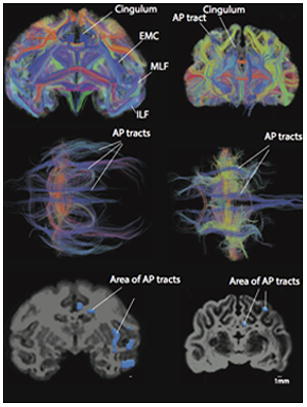The isocortex of primates is disproportionately expanded relative to many different mammals, but little is thought about what the growth of the isocortex entails for variations in mobile composition and connectivity patterns in primates. Across the depth of the isocortex, neurons exhibit stereotypical patterns of projections.
Upper-layer neurons (i.e., layers II-IV) mission inside and throughout cortical areas, whereas many lower-layer pyramidal neurons (i.e., layers V-VI) favor connections to subcortical areas. To establish evolutionary modifications in connectivity patterns, we quantified higher (i.e., layers II-IV)- and decrease (i.e., layers V-VI)-layer neuron numbers in primates and different mammals similar to rodents and carnivores.
We additionally used MR tractography primarily based on high-angular decision diffusion imaging and diffusion spectrum imaging to check anterior-to-posterior corticocortical tracts between primates and different mammals. We discovered that primates possess disproportionately extra upper-layer neurons in addition to an growth of anterior-to-posterior corticocortical tracts in contrast with different mammals.
Taken collectively, these findings exhibit that primates deviate from different mammals in exhibiting increased cross-cortical connectivity.

Comparison of automated mind volumetry strategies with stereology in youngsters aged 2 to three years.
BACKGROUNDThe correct and exact measurement of mind volumes in younger youngsters is vital for early identification of youngsters with lowered mind volumes and an increased danger for neurodevelopmental impairment. Brain volumes could be measured from cerebral MRI (cMRI), however most neuroimaging instruments used for cerebral segmentation and volumetry had been developed to be used in adults and haven’t been validated in infants or younger youngsters.
Here, we examine the feasibility and accuracy of three automated software program strategies (i.e., SPM, FSL, and FreeSurfer) for mind volumetry in younger youngsters and examine the measures with corresponding volumes obtained utilizing the Cavalieri methodology of recent design stereology.
METHODSCerebral MRI information had been collected from 21 youngsters with a fancy congenital coronary heart illness (CHD) earlier than Fontan process, at a median age of 27 months (vary 20.9-42.four months). Data had been segmented with SPM, FSL, and FreeSurfer, and complete intracranial quantity (ICV) and complete mind quantity (TBV) had been in contrast with corresponding measures obtained utilizing the Cavalieri methodology.
RESULTSAgreement between the estimated mind volumes (ICV and TBV) relative to the gold commonplace stereological volumes was strongest for FreeSurfer (p < 0.001) and reasonable for SPM section (ICV p = 0.05; TBV p = 0.006). No vital affiliation was evident between ICV and TBV obtained utilizing SPM NewSegment and FSL FAST and the corresponding stereological volumes.CONCLUSIONSFreeSurfer gives an correct methodology for measuring mind volumes in younger youngsters, even in the presence of structural mind abnormalities.
